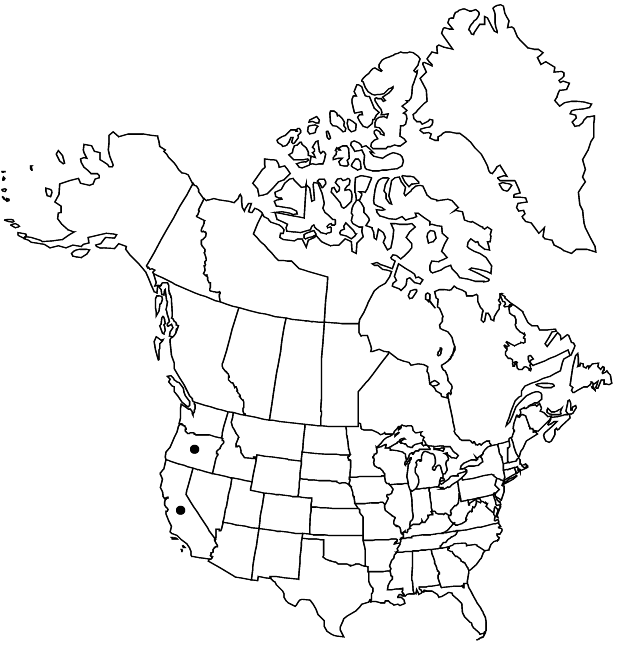Difference between revisions of "Lithophragma heterophyllum"
in J. Torrey and A. Gray, Fl. N. Amer. 1: 584. 1840 (as heterophylla) ,.
FNA>Volume Importer |
imported>Volume Importer |
||
| (One intermediate revision by the same user not shown) | |||
| Line 1: | Line 1: | ||
{{Treatment/ID | {{Treatment/ID | ||
|accepted_name=Lithophragma heterophyllum | |accepted_name=Lithophragma heterophyllum | ||
| − | |accepted_authority=(Hooker & Arnott) Hooker & Arnott | + | |accepted_authority=(Hooker & Arnott) Hooker & Arnott |
|publications={{Treatment/Publication | |publications={{Treatment/Publication | ||
|title=in J. Torrey and A. Gray, Fl. N. Amer. | |title=in J. Torrey and A. Gray, Fl. N. Amer. | ||
| Line 7: | Line 7: | ||
}} | }} | ||
|common_names=Hillside woodland star | |common_names=Hillside woodland star | ||
| + | |special_status={{Treatment/ID/Special_status | ||
| + | |code=E | ||
| + | |label=Endemic | ||
| + | }} | ||
|basionyms={{Treatment/ID/Basionym | |basionyms={{Treatment/ID/Basionym | ||
|name=Tellima heterophylla | |name=Tellima heterophylla | ||
| Line 43: | Line 47: | ||
-->{{#Taxon: | -->{{#Taxon: | ||
name=Lithophragma heterophyllum | name=Lithophragma heterophyllum | ||
| − | |authority=(Hooker & Arnott) Hooker & Arnott | + | |authority=(Hooker & Arnott) Hooker & Arnott |
|rank=species | |rank=species | ||
|parent rank=genus | |parent rank=genus | ||
| Line 56: | Line 60: | ||
|publication title=in J. Torrey and A. Gray, Fl. N. Amer. | |publication title=in J. Torrey and A. Gray, Fl. N. Amer. | ||
|publication year= | |publication year= | ||
| − | |special status= | + | |special status=Endemic |
| − | |source xml=https:// | + | |source xml=https://bitbucket.org/aafc-mbb/fna-data-curation/src/2e0870ddd59836b60bcf96646a41e87ea5a5943a/coarse_grained_fna_xml/V8/V8_158.xml |
|genus=Lithophragma | |genus=Lithophragma | ||
|species=Lithophragma heterophyllum | |species=Lithophragma heterophyllum | ||
Latest revision as of 22:41, 5 November 2020
Plants slender. Flowering stems simple, 20–40 cm. Leaves in basal rosette and cauline, basal shallowly 2–5-lobed, cauline (2–10), 3-lobed with secondary teeth, usually much reduced, similar to basal, (bearing axillary bulbils, aerial bulbils may replace flowers in axils); stipules small, not decurrent onto petiole, (margins fimbriate); petiole to 8 cm; blade dark green or reddish green, orbiculate, (margins toothed), surfaces hairy. Inflorescences 1–4(–6), (lax), nodding, 2–6(–12)-flowered racemes, often many-branched, (15–50 cm). Pedicels equaling or shorter than hypanthium, (flowers long-pedicellate). Flowers persistent, not fragrant, horizontal; hypanthium narrowly campanulate with truncate base, not elongating in fruit, throat open, (length 2 times diam.); sepals erect in bud, becoming widely spreading after anthesis, triangular; petals (completely exserted), widely spreading, (lax), white, obovate-pandurate, lamina spoon-shaped, narrowly clawed, unlobed or 3(–5)-lobed, 5–12 mm, ultimate margins entire; ovary superior; styles much exserted in fruit; stigma papillae apical. Seeds 0.4–0.5 mm, tuberculate (tubercles in 3–19 rows, blunt). 2n = 14.
Phenology: Flowering Jun.
Habitat: Partly or fully shaded, well-drained slopes of oak or mixed coniferous-oak woodland
Elevation: 0-1500 m
Discussion
Lithophragma heterophyllum is known in the coastal mountains of southern Oregon and in California from Humboldt to Los Angeles counties. Its variable morphology is associated with the amount of available moisture and site exposure.
Sympatric populations of Lithophragma heterophyllum and L. bolanderi occur in the south-central California Coast Ranges. The distinguishing characteristics for L. heterophyllum are hypanthium shape, petal outline, and exsertion of stigma and style in fruit.
Selected References
None.
